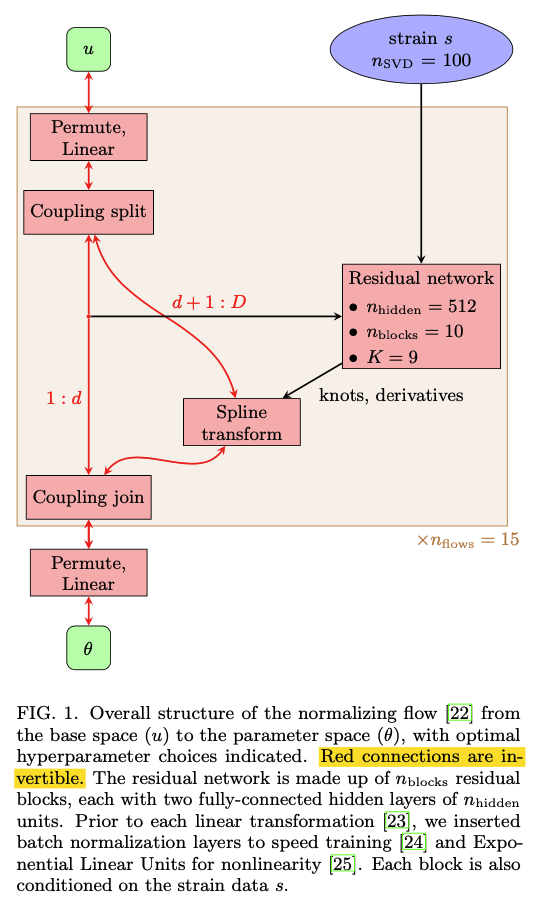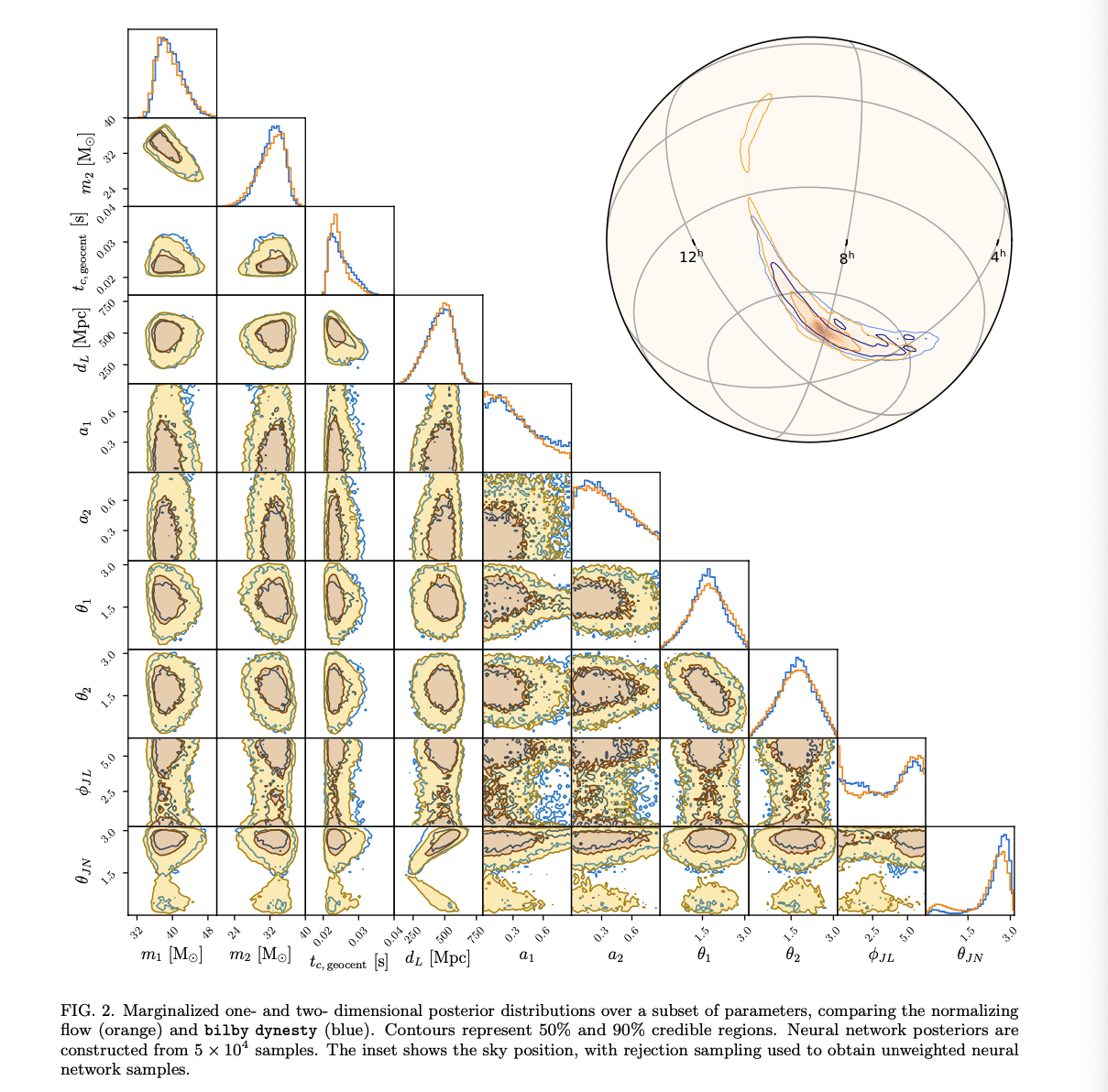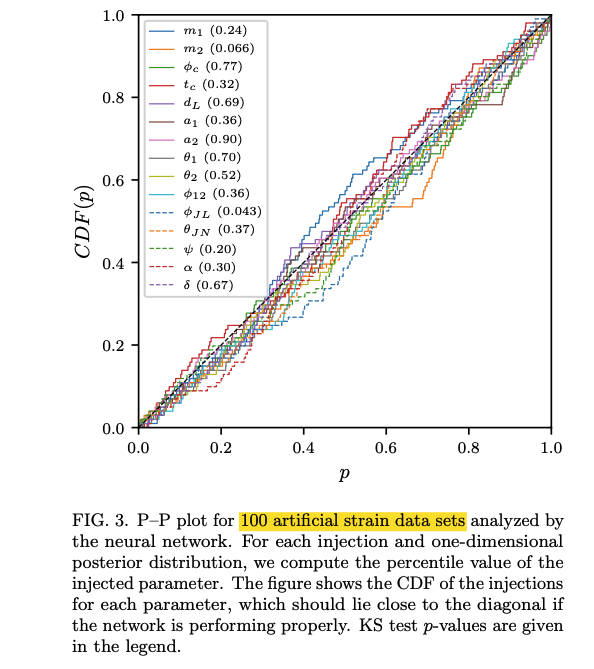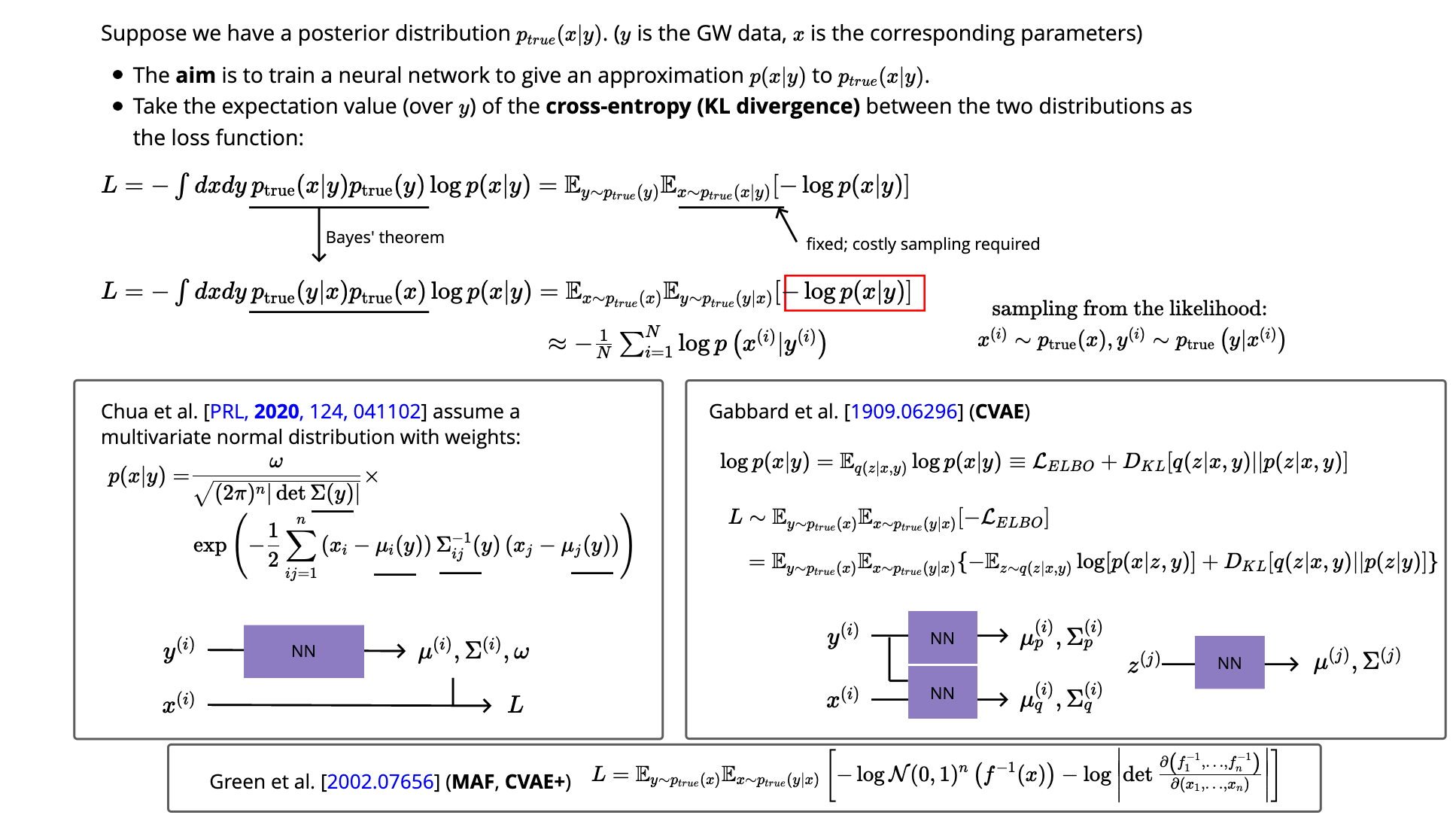

[Paper Summary] Complete Parameter Inference for GW150914 Using Deep Learning
source link: https://iphysresearch.github.io/blog/post/apaperaday/complete_parameter_inference_for_gw150914_using_deep_learning/
Go to the source link to view the article. You can view the picture content, updated content and better typesetting reading experience. If the link is broken, please click the button below to view the snapshot at that time.
One-sentence Summary
The paper describes a neural network architecture, based on normalizing flows alone, that is able to generate posteriors on the full D=15 dimensional parameter space of quasi-circular binary inspirals, using input data surrounding the first observed GW event, GW150914, from multiple gravitational-wave detectors.
- For both 2008.03312 and 2002.07656:
Background
-
Inference is extremely computationally expensive.
- Run times (MCMC & Nested-samping) for single posterior calculations typically take days for BBH systems and weeks for BNS.
- In the nearly future, event rates reach one per day or even higher.
-
Existing pipelines:
- LALInference
- Bilby
-
An advantage of likelihood-free methods is that waveform generation is done in advance of training and inference, rather than at sampling time as for conventional methods.
Model: normalizing flows
Specifically, a neural spline normalizing flow.
- Conor Durkan, Artur Bekasov, Iain Murray, and George Papamakarios, “Neural spline flows,” (2019), arXiv:1906.04032 [stat.ML].
- Conor Durkan, Artur Bekasov, Iain Murray, and George Papamakarios, “Neural spline flows,” https://github.com/bayesiains/nsf (2019).

Training
Waveform generation is too costly to perform in real time during training, so we adopt a hybrid approach:
we sample “intrinsic”parameters in advance and save associated waveform polarizations h+,×(i); at train time we sample “extrinsic” parameters, project onto detectors, and add noise. We used 106 sets of intrinsic parameters, which was sufficient to avoid overfitting.

Prior
-
The authors consider (mi,ϕc,ai,θi,ϕ12,ϕJL,θJN) to be intrinsic (10 parameters (i=1,2)), so they are sampled in advance of training (see figure):
- detector-frame masses
- mi∼U[10,80] M⊙
- reference phase
- ϕc∼U[0,2π]
- Spin magnitudes
- ai∼U[0,0.88]
- spin angles
- cos(θi)∼U[1,−1],ϕ12∼U[0,2π],ϕJL∼U[0,2π]
- inclination angle
- cos(θJN)∼U[−1,1]
- detector-frame masses
-
During the training, they take a uniform prior over the “extrinsic” for sampling:
- time of coalescence
- tc,geocent∼U[−0.1,0.1]
- (taking tc,geocent=0 to be the GW150914 trigger time)
- luminosity distance
- dL∼U(100,1000) Mpc
- polarization angle
- ψ∼U[0,π]
- sky position
- α∼U[0,2π],sin(δ)∼U[−1,1].
- time of coalescence
-
All parameters are rescaled to have zero mean and unit variance before training (see figure).
Strain data
- Assuming stationary Gaussian noise
IMRPhenomPv2frequency-domain precessing model.- A frequency range of [20,1024] Hz
- A waveform duration of 8 s, in which the trigger time at 6th s.
- whiten h+,×(i) using the noise PSD estimated from 1024 s of detector data prior to the GW150914 event.
- The whitened waveforms are compressed to a reduced-order representation using singular value decomposition. The authors keep the first nSVD=100 components during training (see figure).
- The authors pre-prepared a grid of time-translation matrix operators that act on vectors of RB coefficients for relative whitening and time shifting.
- The data is also standardized to have zero mean and unit variance in each component (see figure).

Results
-
Coding using PyTorch
-
500 epochs
-
a batch size of 512
-
Initial learning rate: 0.0002 (using cosine annealing)
-
Reserved 10% of training set for validation
-
Traning took ∼6 days with an NVIDIA Quadro P400 GPU
-
Testing (see figure) produced samples at a rate of 5,000 per second.
-
The authors said that varied nSVD can be used to imporve the performance.

- The authors show their benchmarked result comparing with bilby:
- Both distributions are clearly in very close agreement.
- Minor differences in the inclination angle θJN.
- FYI: I have reproduced the result and see major differences in the inclination angle.

-
The authors claim that their model can be trained to generate any posterior consistent with the prior and the given noise PSD.
-
FYI: I can’t reproduce a evidence to support this claim with other GW events for now.
-
A P-P plot is shown to support this claim.
- My comment: more artificial strain data (>200) and confidence intervals (eg: 95%) around the diagonal are needed.
- FYI: I have shown 1-σ confidence intervals for the P-P plot, and it seems not good enough.

-
Remark
-
One approach would be to condition the model on PSD information:
During training, waveforms would be whitened with respect to a PSD drawn from a distribution representing the variation in detector noise from event to event, and (a summary of) this PSD information would be passed to the network as additional context.
(PSD samples can be obtained from detector data at random times.)
-
As new and more powerful normalizing flows are developed by computer scientists in the future, they will be straight-forward to deploy to further improve the performance and capabilities of deep learning for gravitational-wave parameter estimation.
Appendix for 2002.07656
One slide for all points:

Appendix for 2008.03312
Research notes for the source code. (Download the PDF)
Recommend
About Joyk
Aggregate valuable and interesting links.
Joyk means Joy of geeK